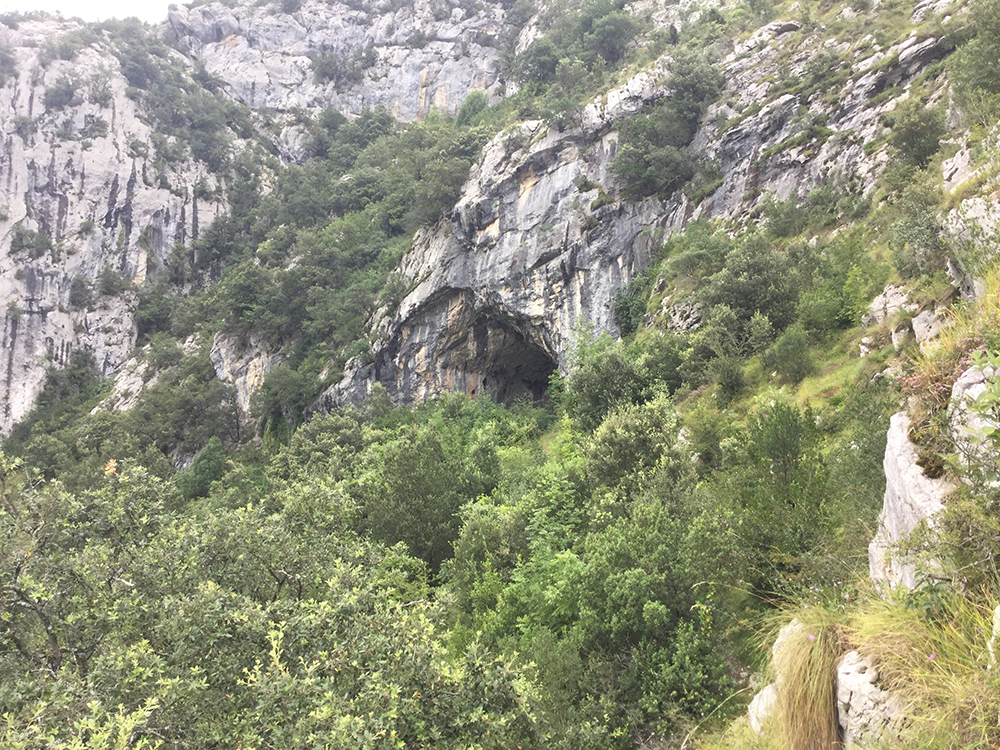El Mirón Cave

- Investigator/s:
- Dr. Lawrence Straus
- Dates:
- Ongoing
Description
This fall, Dr. Lawrence Straus continued his work at El Mirón Cave, conducting lab research in the Instituto International de Investigaciones Prehistoricas at the Universidad de Cantabria, Santander, Spain. Dr. Emily Jones and Milena Carvalho (PhD student in archaeology) are currently analyzing faunal remains from two early Magdalenian levels of El Mirón Cave at the Universidad de Cantabria, Archaeozoology Lab.
Dr. Straus has been conducting excavation and field work at El Mirón Cave, located near Ramales, Cantabria, Spain, with his co-director, Professor Manuel Gonzalez Morales of the Universidad de Cantabria since 1996. The site, on the northern edge of the Cantabrian mountain chain, has yielded one of the longest prehistoric cultural sequences in Spain or Europe, with levels pertaining to the late Mousterian (Neanderthal culture), Gravettian, Solutrean, Magdalenian, Azilian, Neolithic, Chalcolithic, and Early Bronze ages, dated by an unprecedented 90 radiocarbon assays ranging from about 45,000 to 3500 years ago. As highlights, it can be noted that El Mirón has the earliest evidence for full-blown food production-based lifeways (high-quality, locally produced ceramics, domesticated wheat, sheep/goats, cattle and pigs) in northern Atlantic Iberia. It also contains extraordinary living surfaces of early Magdalenian age (17,000–14,000 years old) with pits, hearths and other possible structures associated with huge amounts of stone and bone artifacts, together with shell and tooth ornaments, works of portable art, and the first human burial of Magdalenian age to be found on the Iberian Peninsula. The so-called “red lady of El Mirón” was ritually buried with red ochre and her grave may have been marked by engravings on a large block of limestone that delimits the western edge of the burial. Her DNA shows that she was a member of a population that had abandoned NW Europe during the Last Glacial Maximum, survived this climatic crisis in SW Europe, and would recolonize the north by the end of the Magdalenian period.
Generations of UNM undergraduate and graduate students—along with students from Spain and many other European and American countries—participated in the El Mirón Cave excavations. Numerous MA and PhD dissertations at UNM and Universidad de Cantabria have resulted from the research, along with two monographs and dozens of articles by Straus, Gonzalez Morales, and their colleagues in many paleoanthropological specialties. The research was given an award for the outstanding scientific work of 2016 by the Universidad de Cantabria and was the subject of Straus’ 2015 annual research lecture at UNM and his 2010 Movius Lecture at Harvard, as well as many other lectures and presentations in the US and Europe.
Funding for the El Mirón project has been received from the National Science Foundation, National Geographic Society, Fundacion Marcelino Botin, the L.S.B. Leakey Foundation, the UNM Fund for Stone Age Research (whose main contributors are Jean & Ray Auel), the government of Spain, and the regional government of Cantabria.
